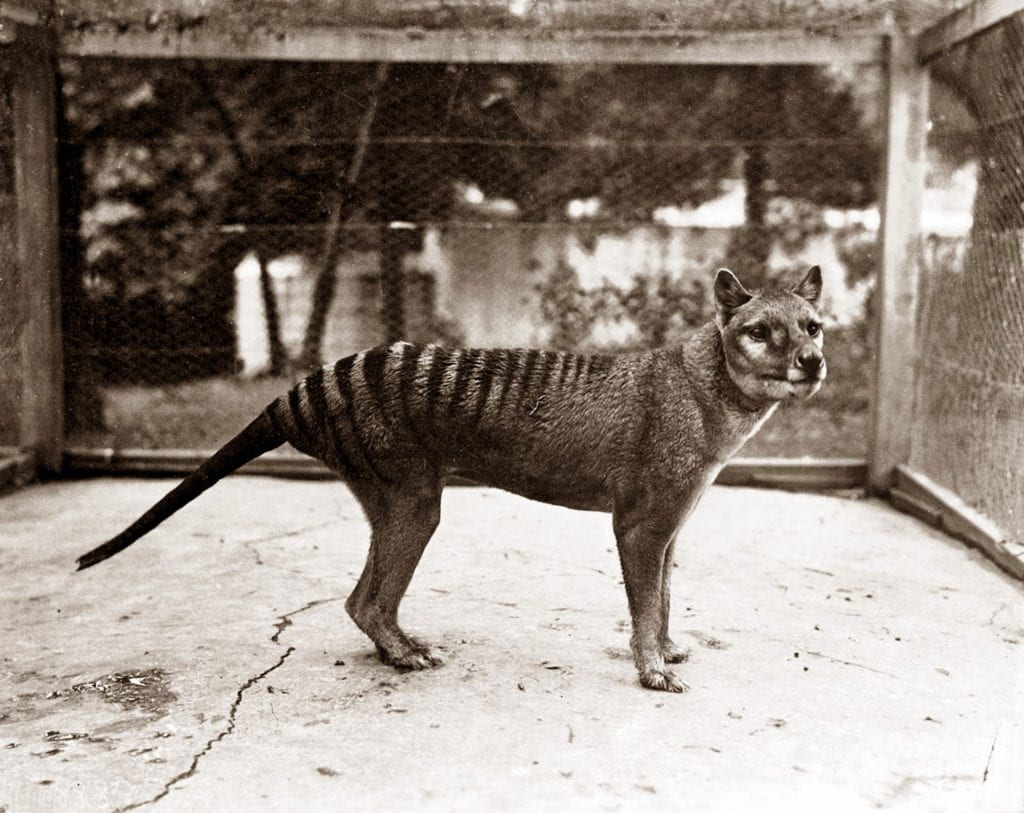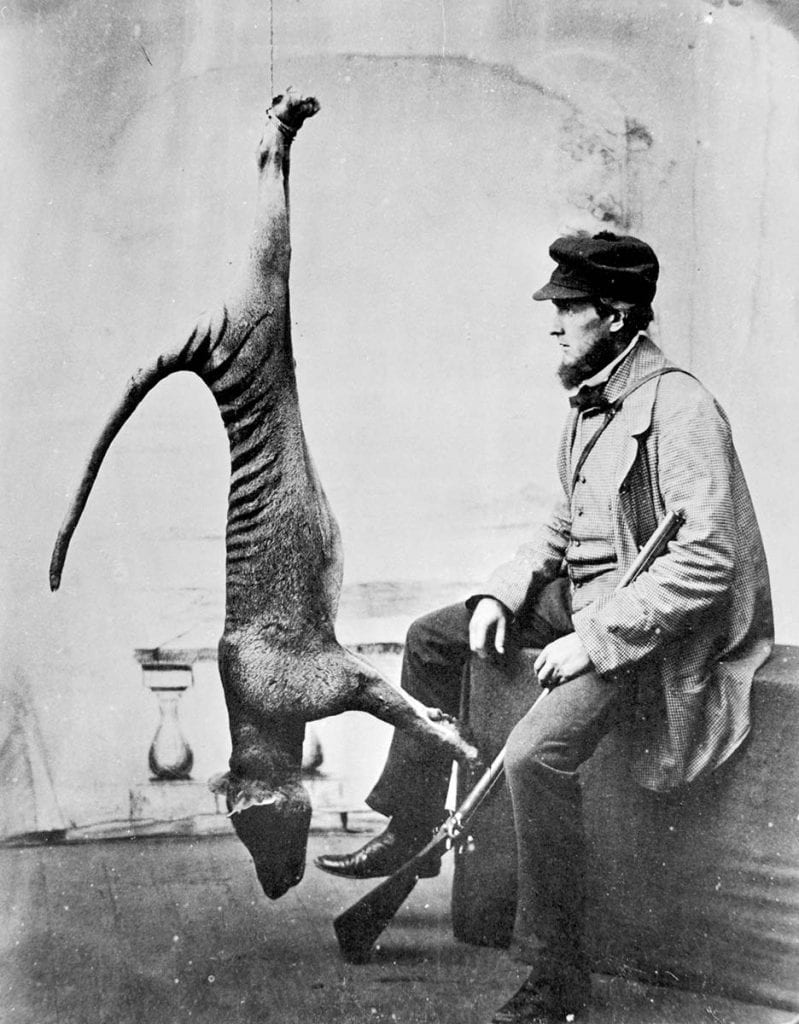The thylacine (Thylacinus cynocephalus) was a large Australian marsupial mammal that once thrived on the island of Tasmania. The thylacine was commonly referred to as the Tasmanian tiger due to its striped lower back or as the Tasmanian wolf due to its dog-like appearance.
The thylacine once ranged throughout the Australian mainland and as far north as New Guinea. However, it disappeared from the mainland around 3000 years ago through hunting by humans and competition with dingoes.
Fortunately, a population of thylacines became isolated on Tasmania, providing protection from the threats of the mainland. Here, the thylacine thrived before facing a new threat – the arrival of the early European settlers.
Being labelled as a “sheep killer”, the thylacine was persecuted for killing livestock, later found to be exaggerated. Nevertheless, a government-imposed bounty was placed on the thylacine, fetching £1 per animal.
Ultimately, this government-imposed bounty led to their extinction, with the last known individual “Benjamin” dying in captivity on 7 September 1936, two months after the species was granted protected status.
The thylacine is one of the few animals where we can pinpoint the exact moment of its extinction. This date now marks world extinction day.

The Thylacine as a candidate for de-extinction
Of all the species proposed for de-extinction, the thylacine has arguably the most compelling case. The thylacine was eradicated as a result of direct human influence less than 100 years ago, rather than through natural processes such as those that led to the extinction of the dinosaurs.
The thylacine was completely unique among living marsupials. Not only did it have its iconic wolf-like appearance, but it was also our only marsupial apex predator. Apex predators form extremely important parts of the food chain and are often responsible for stabilising ecosystems. The habitat in Tasmania has remained relatively unchanged, providing the perfect environment to re-introduce the thylacine and enabling it to reoccupy its niche.
The thylacine de-extinction project will develop key technologies and resources which are critical now to help preserve and conserve our extant marsupial species.

